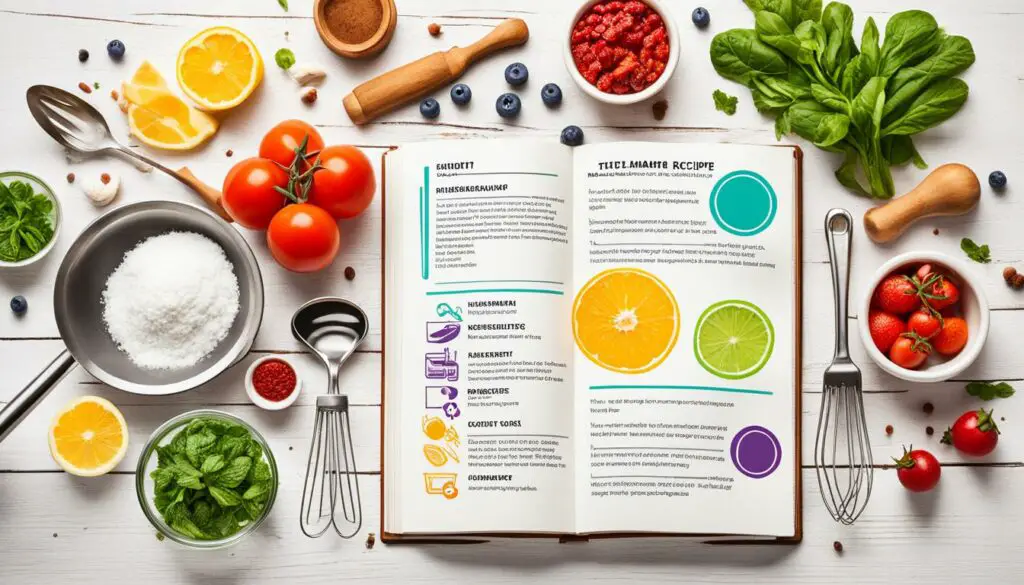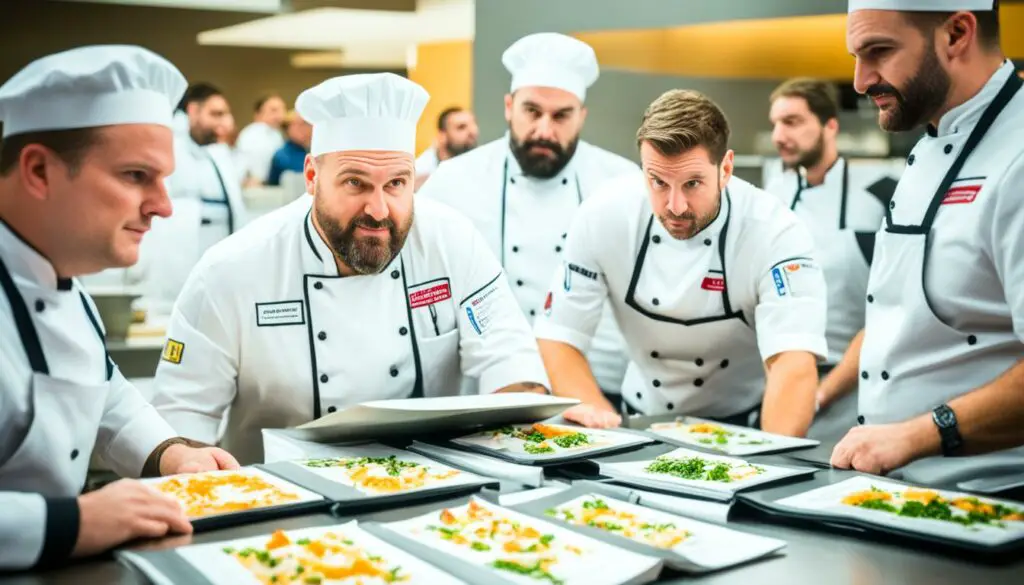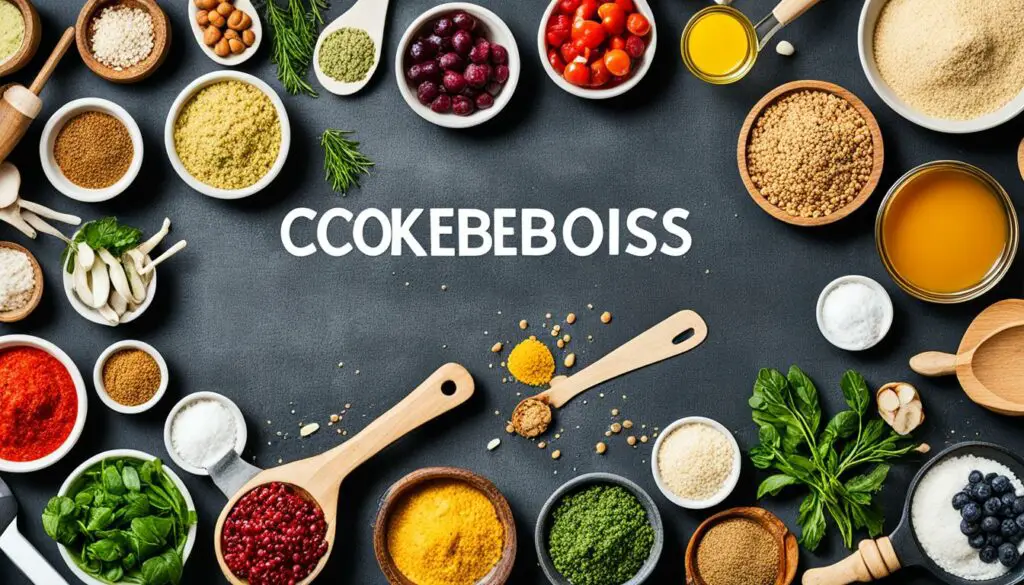Originally posted on February 10, 2024 @ 8:00 am
Selling someone else’s recipe can be a confusing legal territory. The legality of using and selling someone else’s recipe depends on various factors, including copyright, trademark, patent, and trade secret protection. Understanding these factors is essential to ensure that you are selling recipes legally and avoiding any potential legal issues.
When it comes to copyright protection, food recipes, in general, are challenging to protect. Individual recipes, which are often just lists of ingredients, lack the necessary literary expression required for copyright protection. However, a collection of recipes, such as a cookbook, can be protected under copyright law. It is important to note that copyright protection covers the accompanying text, photographs, and videos, rather than the recipe itself.
Trademarks can be used to protect the names and logos associated with recipes. While trademarks cannot prevent others from using the recipe itself, they can prevent competitors from using a similar name for a dish. If you plan to sell a recipe and want to protect its brand identity, filing for a trademark registration or reserving a trademark can be beneficial.
Trade secrets are often employed to protect famous recipes. By using nondisclosure agreements, businesses can safeguard their secret recipes from being shared or used by others. However, it is important to be aware that trade secrets can be reverse-engineered if someone with scientific knowledge gains access to the recipe.
When republishing or modifying a recipe, it is crucial to consider copyright protection. While precise changes to three items in a recipe may not be enough to claim it as your own, it is still important to acknowledge the original source or inspiration for the recipe. Proper recipe attribution is not only a matter of legality but also ethics and common courtesy.
While there are limited protections in place for recipe creators under U.S. copyright law, responsible recipe sharing practices can help protect the rights of creators and foster a culture of creativity and innovation in the culinary world.
Contents
- 1 Copyright Protection for Recipes
- 2 Using Trademarks to Protect Recipes
- 3 Trade Secrets and Recipe Protection
- 4 Republishing and Modifying Recipes
- 5 Ethical Considerations in Recipe Sharing
- 6 Limited Protection for Recipe Creators
- 7 Challenges in Recipe Copyright Enforcement
- 8 Conclusion
- 9 FAQ
- 9.1 Is it legal to sell someone else’s recipe?
- 9.2 How are recipes protected under copyright law?
- 9.3 Can trademarks be used to protect recipes?
- 9.4 How can trade secrets protect recipes?
- 9.5 What are the considerations for republishing and modifying recipes?
- 9.6 What are the ethical considerations in recipe sharing?
- 9.7 What protection is available for recipe creators?
- 9.8 What are the challenges in recipe copyright enforcement?
- 9.9 What should be considered regarding the legalities of selling recipes and responsible recipe sharing?
- 10 Source Links
Key Takeaways:
- Selling someone else’s recipe can involve legal complexities related to copyright, trademark, patent, and trade secret protection.
- Individual recipes are challenging to protect under copyright law, but recipe collections can enjoy copyright protection.
- Trademarks can be used to protect the names and logos associated with recipes, safeguarding the brand identity of a dish.
- Trade secrets, combined with nondisclosure agreements, can keep famous recipes confidential and prevent unauthorized use.
- Proper recipe attribution is essential when republishing or modifying a recipe to respect the original source and acknowledge the creator.
Copyright Protection for Recipes

When it comes to copyright protection, recipes have limitations. Individual recipes, which are essentially lists of ingredients, are difficult to protect under copyright law. However, other elements associated with recipes can be protected, such as the accompanying written text, photographs, and videos. Recipe collections, such as cookbooks, enjoy protection as a whole, even if the individual recipes are in the public domain.
When publishing recipes, it is advisable to include additional elements beyond the ingredient list to strengthen copyright protection. These elements can include headnotes, general instructional notes, and detailed directions. By providing more than just the basic recipe, creators add more originality and expression to their work, making it easier to assert copyright protection.
Using Trademarks to Protect Recipes

In the world of recipes, trademarks can play a crucial role in protecting your brand identity and preventing confusion among consumers. While trademarks do not directly shield the actual recipe, they offer legal protection for the names and logos associated with your culinary creations. This section will explore how trademarks can help safeguard your recipe brands, prevent competitors from using similar names, and how to go about obtaining trademark registration.
Protecting Recipe Brands with Trademarks
When it comes to selling your food items, having a unique and recognizable brand can make all the difference. Trademarks grant exclusive rights to use a particular name, logo, or slogan in connection with your culinary creations. By registering a trademark, you can prevent competitors from using similar names or logos that could lead to confusion among consumers.
“Trademarks provide the necessary legal protection to preserve your recipe brand identity and make it stand out in a crowded market.”
Preventing Confusion in the Marketplace
By having a registered trademark, you can establish a strong presence in the marketplace and distinguish your recipe brands from others. This prevents potentially misleading or similar names that could confuse consumers and dilute the value of your brand.
For instance, if you’ve created a delicious pasta dish called “Chef Rosa’s Heavenly Linguine,” having a registered trademark for this name would prevent other chefs or restaurants from using a similar name like “Chef Rosa’s Linguine Delight.” This protection ensures that your customers can easily identify your unique dish and associate it with your restaurant or brand.
The Process of Registering a Trademark
If you want to protect your recipe brand with a trademark, you can file for a trademark registration or reserve a trademark at the U.S. Patent and Trademark Office (USPTO). The registration process involves submitting an application, paying a fee, and demonstrating that your recipe name or logo meets the necessary criteria for uniqueness and distinctiveness.
Once your trademark is registered, it is important to consistently use the registered mark and monitor the marketplace for any potential trademark infringements. Regularly reviewing the USPTO database and working closely with an intellectual property attorney can help you safeguard your recipe brand and take appropriate legal action if necessary.
The Power of Effective Marketing
While trademarks provide legal protection, effective marketing and building a strong brand identity are equally important. Promoting your recipe brands consistently across various platforms, including social media, websites, and packaging, can help reinforce your trademark protection and create a lasting impression in the minds of consumers.
By leveraging both legal and marketing strategies, you can establish a unique and memorable presence in the culinary world and ensure that your recipe brands are recognized and respected.
Trade Secrets and Recipe Protection

Many famous recipes are kept as trade secrets to maintain a competitive advantage. A trade secret involves insider knowledge that gives a business an edge. To protect a recipe as a trade secret, nondisclosure agreements must be used with contractors, manufacturers, distributors, and anyone else with access to the secret recipe.
“Trade secrets are a valuable tool for recipe protection. By maintaining secrecy, companies can protect their unique recipes from being replicated by competitors.”
Trade secrets offer advantages over other forms of intellectual property protection such as patent or copyright. Unlike patents that require public disclosure of the recipe, trade secrets allow businesses to maintain the confidential nature of their recipes and prevent competitors from accessing or using them.
It is important to note that trade secrets can be reverse-engineered if someone with scientific knowledge gains access to the recipe. However, the difficulty and expense in replicating a secret recipe through reverse-engineering act as deterrents for would-be imitators.
Non-Disclosure Agreements (NDAs)
Nondisclosure agreements (NDAs) are essential tools for maintaining recipe secrecy. By requiring individuals or entities with access to the secret recipe to sign NDAs, businesses can legally prevent the disclosure and unauthorized use of their recipes.
With the help of NDAs, the recipe creator can control who has access to the confidential information and ensure that it remains protected from unauthorized disclosure.
Benefits of Trade Secret Protection
The use of trade secrets and nondisclosure agreements offers several benefits for recipe protection:
- Maintaining Competitive Advantage: By keeping a recipe secret, businesses can differentiate themselves from competitors and offer unique products.
- Long Duration of Protection: Trade secret protection can last indefinitely as long as the recipe remains a secret.
- Economic Advantage: Trade secret protection is often a more cost-effective option compared to other forms of intellectual property protection.
- No Formal Registration: Unlike patents or trademarks, trade secrets do not require formal registration, reducing administrative burdens and costs.
Trade secrets serve as a valuable strategy for recipe protection, allowing businesses to maintain the confidentiality of their recipes while enjoying the commercial benefits of exclusivity.
| Benefits of Trade Secret Protection | Explanation |
|---|---|
| Maintaining Competitive Advantage | Keeping the recipe secret helps businesses stand out from competitors. |
| Long Duration of Protection | Trade secret protection lasts as long as the recipe remains undisclosed. |
| Economic Advantage | Trade secrets are a cost-effective option for recipe protection. |
| No Formal Registration | Trade secrets do not require formal registration, reducing administrative burdens and costs. |
Trade secrets and nondisclosure agreements play a crucial role in maintaining the confidentiality and exclusivity of valuable recipes. By leveraging these strategies, businesses can safeguard their trade secrets and preserve their competitive edge in the culinary industry.
Republishing and Modifying Recipes

When it comes to sharing and modifying recipes, it is important to navigate the terrain of copyright protection while respecting the original creators. While making a few changes to a recipe may not be enough to claim it as your own, it is considered a professional courtesy to attribute the original source or inspiration.
Proper recipe attribution is not only a matter of legality, but also ethics and common courtesy. Giving credit to the original creator acknowledges their hard work and allows others to discover more of their amazing recipes. It also fosters a sense of community and collaboration in the culinary world.
If you work in a restaurant or for a caterer and use their recipes, it is crucial to respect any trade secrets and confidential information shared by your employer. Upholding the trust placed in you not only protects their creative works but also ensures the continued success of the business.
Remember, the goal is to foster a culture of creativity and innovation while keeping the culinary community vibrant. By honoring recipe attribution and respecting the intellectual property of others, we can all contribute to the growth and development of the food industry.
Recipe Attribution Guidelines:
- Always credit the original source of the recipe, whether it’s a cookbook, website, or blog.
- If you make any modifications, clearly state the changes and give credit to the original recipe as the inspiration.
- Provide a link to the original source whenever possible, allowing readers to discover more recipes from the creator.
“Recipe attribution is not only a legal requirement but a respectful gesture towards the creators who have shared their culinary talents with the world. Giving credit where it’s due fosters a sense of community and encourages creative collaboration.”
– Chef Julia Smith, Recipe Creator
Ethical Considerations in Recipe Sharing
When it comes to recipe sharing, it is not just a question of legality but also one of ethics and respect for the original creators. Even if a recipe is not protected by copyright, it is still important to adhere to ethical behavior and ensure that credit is given where it is due.
Giving credit to the original source, whether it is a cookbook, website, or blog, is a fundamental sign of respect and common courtesy. Recognizing the effort and creativity of others fosters a culture of appreciation in the culinary community.
“In recipe sharing, acknowledging the original source is not only the right thing to do, but also encourages respect for creativity and professionalism,” says renowned food blogger and cookbook author, Alice Waters.
If you decide to use another food blogger’s recipe on your website, it is essential to obtain permission and clearly indicate that you are using the recipe with authorization. This not only shows integrity but also helps build trust and maintain strong relationships within the food blogging community.
Additionally, sharing your own thoughts and experiences with a recipe, along with a link to the authorized source, can be done without violating copyright laws. This practice allows readers to access the original recipe while benefiting from your unique perspectives.
By respecting original sources and obtaining permission for reproduction, you contribute to a culture of fairness and collaboration in recipe sharing. Remember, copyright protection is not the only guiding principle – ethical behavior underscores the values of the culinary world.
Key Ethical Considerations in Recipe Sharing:
- Always give credit to the original source of a recipe
- Obtain permission before using another food blogger’s recipe
- Clearly indicate that you have permission to use the recipe
- Share your own experiences and thoughts while linking to the authorized source
| Ethical Considerations | Benefits |
|---|---|
| Respecting the original source | Fosters a culture of appreciation |
| Obtaining permission for reproduction | Builds trust and maintains relationships |
| Sharing your experiences and thoughts | Enriches the recipe-sharing experience |
Limited Protection for Recipe Creators
Recipe creators face significant challenges in obtaining adequate protection under U.S. copyright law. Unfortunately, unauthorized borrowing of recipes is a prevalent issue, and the law offers limited recourse for recipe creators seeking legal remedies. While copyright protection exists for original works of authorship, proving unauthorized recipe borrowing without substantial similarities in wording and headnotes is often difficult.
This lack of protection poses a significant problem for recipe creators who invest time, effort, and creativity into developing unique culinary creations. Without robust legal safeguards, their intellectual property rights may go unrecognized and uncompensated.
One of the primary challenges in protecting recipes under copyright law is the requirement to demonstrate substantial similarities between the original recipe and the borrowed version. Unlike other forms of creative works, such as literature or music, recipes often lack the level of literary expression necessary for copyright protection.
Furthermore, differences in wording, headnotes, and methods can be used as defenses against copyright infringement claims. These variations, even when small, can make it difficult to establish unauthorized recipe borrowing in a court of law.
The Impact on Recipe Creators
This limited protection for recipe creators not only affects their ability to protect their original creations but also undermines the incentive for innovation and creativity in the culinary world. The lack of legal remedies discourages recipe creators from sharing their unique recipes and stifles the potential for new culinary experiences.
Additionally, unauthorized recipe borrowing can have financial implications for creators. Imagine spending hours developing a signature dish and then discovering that others are profiting from your recipe without your permission or acknowledgment.
“The limited protection offered to recipe creators raises concerns about the future of culinary innovation and the ability of creators to benefit from their creative works.”
Comparing Legal Protection for Creative Works
The table below provides a comparison of the legal protection available for different types of creative works under U.S. copyright law:
| Creative Work | Level of Protection |
|---|---|
| Literature, Music, Art | High level of protection |
| Recipes | Limited protection |
| Photographs, Videos | Higher level of protection when combined with recipes |
| Recipe Collections (Cookbooks) | Higher level of protection as a whole |
As seen in the table, recipe creators face considerable challenges compared to other creators of various artistic works. The limited protection for recipes raises important questions about the balance between encouraging creativity and recognizing the rights of creators in the culinary field.
Challenges in Recipe Copyright Enforcement
Enforcing recipe copyright poses various legal challenges, requiring careful consideration of the complexities involved. Certain factors, such as differences in wording, headnotes, and methods, can serve as potential defenses against claims of copyright infringement. These differences can make it challenging to establish unauthorized copying, especially when explicit similarities are absent. The need to prove substantial similarities often presents a hurdle in recipe copyright enforcement.
While recipe borrowing remains a prevalent issue, the intricacies of copyright law can complicate the efforts to protect original recipes. As a result, recipe creators may face difficulties in enforcing their copyright and seeking legal remedies for unauthorized use.
Conclusion
Selling someone else’s recipe can be a complex legal endeavor, with copyright, trademark, patent, and trade secret protection offering varying levels of recourse. However, due to the nature of recipes, it can be challenging to protect them under copyright law. Nevertheless, responsible and ethical recipe sharing practices can still ensure the protection of creative works and foster a culture of innovation in the culinary world.
When sharing recipes, it is crucial to give credit to the original sources and respect the intellectual property rights of creators. Responsible recipe sharing involves acknowledging the original author or source, whether it be a cookbook, website, or blog, thereby honoring their creative work. Obtaining permission and providing proper attribution is not only a legal requirement but also a demonstration of respect and common courtesy.
While legal protections for recipe creators may be limited, responsible recipe sharing practices can contribute to creating an environment that values and protects creative works. By giving credit to original sources, creators can be recognized for their contributions, and a culture of creativity and innovation can flourish in the culinary community. It is through these actions that we can contribute to the ongoing protection and advancement of the culinary arts.
FAQ
Is it legal to sell someone else’s recipe?
Selling someone else’s recipe can be a complex legal situation. The legality depends on factors like copyright, trademark, and trade secret protections.
How are recipes protected under copyright law?
Individual recipes themselves are difficult to protect under copyright law. However, recipe collections like cookbooks can be protected as a whole. Additional elements beyond the ingredient list can strengthen copyright protection.
Can trademarks be used to protect recipes?
Trademarks can protect the names and logos associated with recipes. While they cannot prevent the copying of a recipe itself, trademarks can prevent others from using a similar name for a dish.
How can trade secrets protect recipes?
Trade secrets involve insider knowledge that gives a business a competitive advantage. To protect a recipe as a trade secret, nondisclosure agreements must be used with anyone who has access to the recipe.
What are the considerations for republishing and modifying recipes?
When republishing a recipe, it is important to consider copyright protection. It is recommended to give credit to the original source or inspiration for the recipe. Mere changes to three items in a recipe may not be enough to claim it as your own.
What are the ethical considerations in recipe sharing?
Ethical recipe sharing involves giving credit to the original source, obtaining permission when using another food blogger’s recipe, and indicating that you have authorization to use it. Sharing your own thoughts and experiences with the recipe, while linking to the authorized source, can be done without violating copyright laws.
What protection is available for recipe creators?
Recipe creators have limited protection under U.S. copyright law. Unauthorized borrowing of recipes is a common occurrence, and the law offers little recourse for recipe creators seeking legal remedies.
What are the challenges in recipe copyright enforcement?
Enforcing recipe copyright can be challenging due to legal complexities. Differences in wording, headnotes, and methods can be used as defenses. The need for substantial similarities poses a challenge in recipe copyright enforcement.
What should be considered regarding the legalities of selling recipes and responsible recipe sharing?
Selling someone else’s recipe can be complex, and it is important to understand the legalities involved. Respecting original sources, obtaining permission for reproduction, and giving credit contribute to responsible and ethical recipe sharing.








